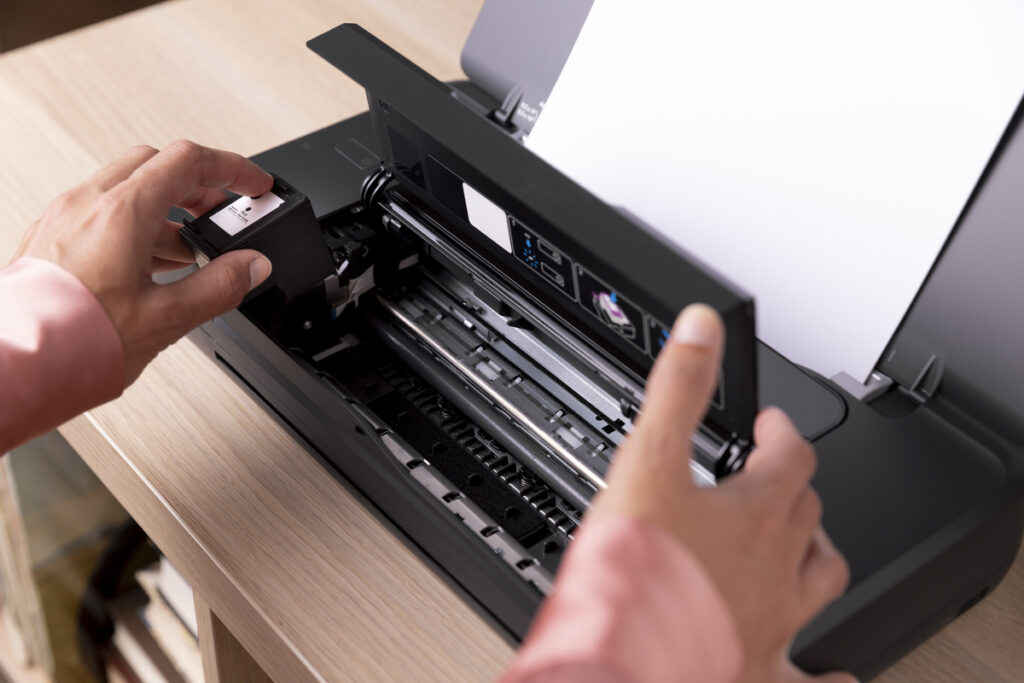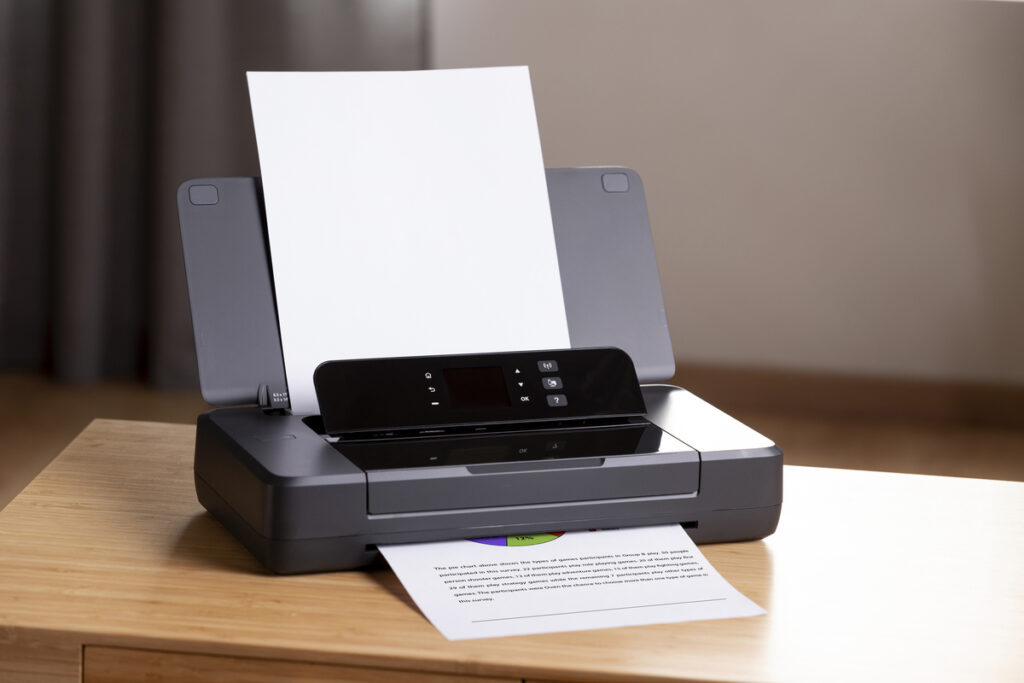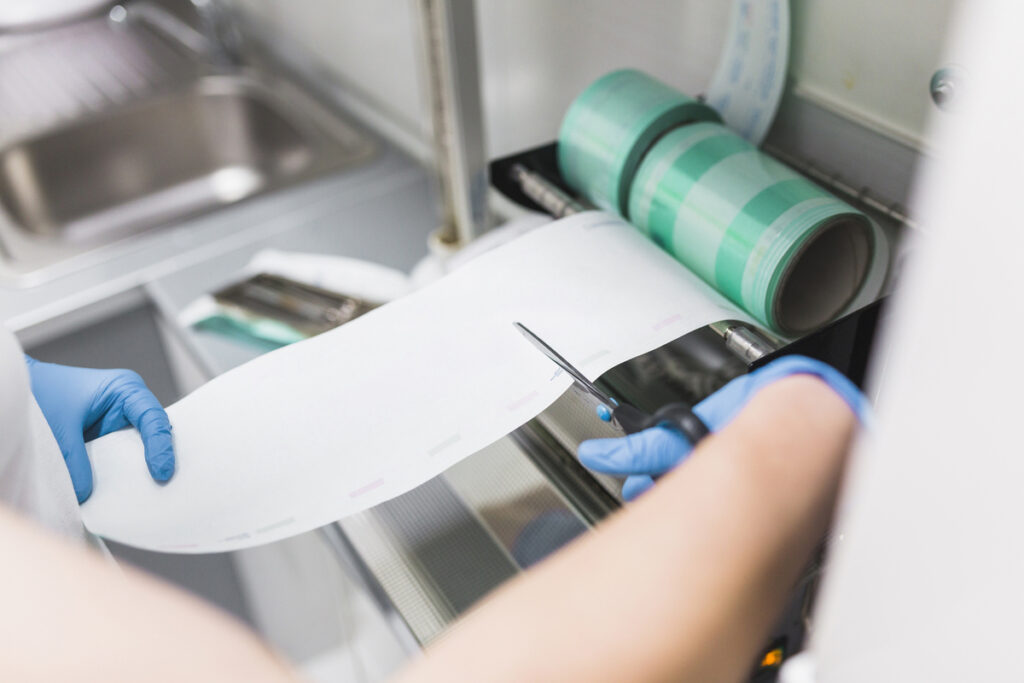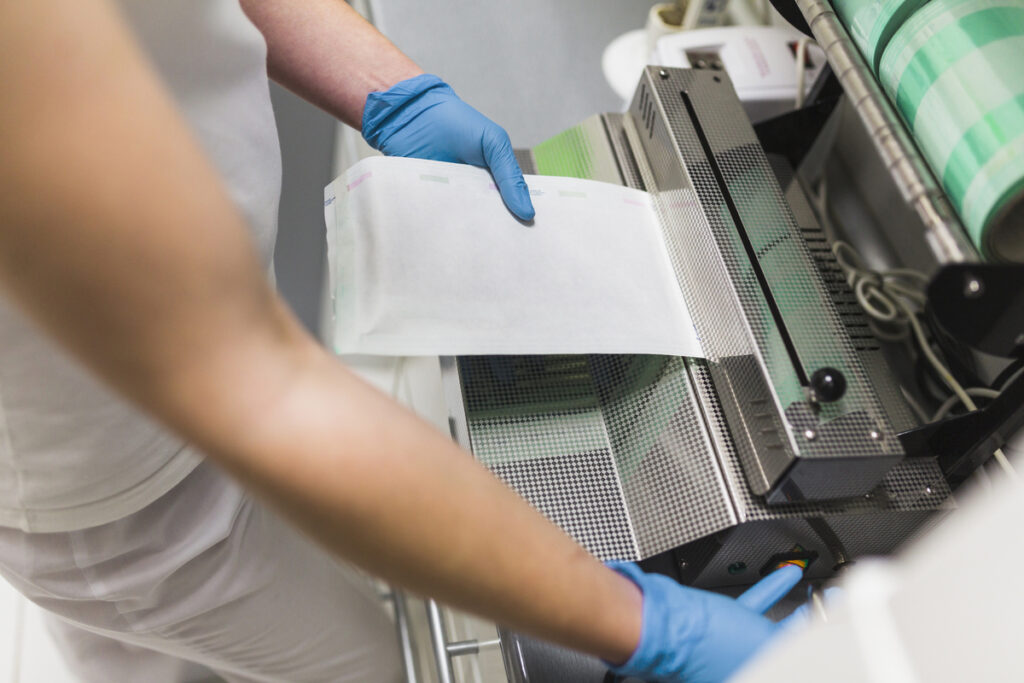Leveraging The Power Of Personalized Marketing With Print Materials

Introduction:
The impact of personalised marketing can sometimes get lost in the noise. However, one avenue that continues to hold its ground and captivate audiences is the strategic use of personalised print materials. By leveraging the power of personalization in print marketing campaigns, Marketing With Print Materials businesses can create a unique and memorable brand experience that resonates with individual customers on a deeper level.
Personalised marketing with print materials goes beyond simply addressing recipients by name. It involves tailoring the entire content and design of the printed materials to suit the preferences, needs, and behaviours of specific target audiences. Through careful data analysis and segmentation, businesses can create highly targeted print campaigns that deliver the right message to the right people at the right time.
This personalised approach offers numerous advantages. It allows businesses to cut through the clutter and engage customers with relevant and meaningful content, fostering a sense of connection and loyalty. Personalised print materials have the power to make recipients feel seen, valued, and understood, resulting in increased brand affinity and a higher likelihood of conversion.
The physical nature of personalised print materials can leave a lasting impression, as they can be held, flipped through, and displayed. This unique sensory experience helps to create a stronger emotional connection between the brand and the customer.
How does personalization in print materials enhance customer engagement?
Personalization in print materials plays a significant role in enhancing customer engagement by creating a unique and tailored experience for each individual. By customising the content, design, and messaging of print materials, businesses can establish a deeper connection with their audience. Here are key ways in which personalization enhances customer engagement in print materials.
Firstly, personalization increases relevance. Customers are more likely to engage with content that is directly relevant to their interests, needs, or purchasing history. By leveraging customer data and segmentation techniques, businesses can deliver personalised messages that speak directly to the recipient. Personalised print materials address the specific pain points, preferences, or aspirations of the individual, capturing their attention and encouraging them to take action.
Secondly, personalization creates a sense of exclusivity and importance. When customers receive print materials that are personalised specifically for them, it makes them feel valued and appreciated. By using their name, referencing previous purchases, or offering tailored recommendations, businesses can demonstrate that they understand their customers’ unique needs. This personal touch fosters a stronger emotional connection, increasing engagement and brand loyalty.
Moreover, personalization in print materials can evoke curiosity and surprise. By incorporating personalised elements such as targeted offers, discounts, or rewards based on customer behaviour, businesses can create a sense of anticipation and excitement. Customers are more likely to engage with print materials that contain personalised incentives or exclusive benefits, driving them to explore further and take the desired action.

What role does data analytics play in creating personalised print marketing campaigns?
Data analytics plays a crucial role in creating personalised print marketing campaigns by providing valuable insights and enabling businesses to make data-driven decisions. Leveraging data analytics allows businesses to understand their target audience better, identify trends and patterns, and tailor their print materials to deliver highly personalised experiences. Here are key ways in which data analytics contributes to the creation of personalised print marketing campaigns.
These segments can be based on factors like age, location, buying habits, or interests. Customer segmentation enables businesses to create targeted print campaigns specific to each segment, ensuring that the content, design, and messaging align with their unique characteristics and needs.
This information can be utilised to tailor the content of print materials, ensuring that it resonates with the recipient. Personalised content can include product recommendations, special offers, or relevant messaging based on the individual’s preferences or buying history. The use of data analytics ensures that the content is highly relevant and increases the chances of engagement and conversion.
How can personalization in print materials increase conversion rates?
Personalization in print materials can significantly increase conversion rates by creating a more engaging and relevant experience for the recipient. By tailoring the content, design, and messaging to individual preferences and needs, businesses can capture the attention and interest of their target audience, leading to higher conversion rates. Here are key ways in which personalization in print materials can drive conversions.
When print materials are personalised, they speak directly to the recipient’s interests, preferences, or previous interactions with the brand. By leveraging customer data and segmentation, businesses can deliver targeted messages that address the specific pain points, desires, or aspirations of the individual. This relevancy increases the likelihood that the recipient will engage with the print material and take the desired action, whether it’s making a purchase, signing up for a service, or responding to a call-to-action. By incorporating elements like their name, past purchase history, or tailored offers, businesses can demonstrate that they understand the recipient’s unique needs. This personal touch fosters a stronger emotional connection, increasing the recipient’s trust in the brand and their likelihood to convert.
By including personalised recommendations or targeted discounts in print materials, businesses can create a sense of urgency and incentivize the recipient to take action. This targeted approach increases the chances of conversion by presenting the recipient with compelling and relevant offers that cater to their specific needs and interests.

What are the key elements to consider when designing personalised print materials?
When designing personalised print materials, several key elements should be considered to ensure a successful and impactful outcome. These elements play a crucial role in delivering a personalised experience that resonates with the recipient. Here are the key considerations when designing personalised print materials:
Data and Segmentation: The foundation of personalised print materials is accurate and relevant data. Collecting and analysing customer data is essential to understand individual preferences, interests, and behaviours. Segmenting the target audience based on this data allows for tailored content and design that aligns with each segment’s characteristics and needs.
Content Personalization: Personalised content is the heart of any successful print material. It involves customising the message, imagery, and offers based on the recipient’s data. Personalised content should address the recipient by name, reference their previous interactions or purchases, and provide relevant information or recommendations that are specific to their interests and needs.
Design and Layout: The design and layout of personalised print materials should be visually appealing and cohesive. Incorporate branding elements such as logos, colours, and fonts while ensuring that the design aligns with the recipient’s preferences and reflects their demographic or psychographic characteristics. Use clear and concise visuals that support the personalised content and evoke an emotional response.
Variable Data Printing: Variable data printing (VDP) is a key technology in personalised print materials. It allows for the seamless integration of personalised text, images, and graphics into the print design. Utilise VDP to dynamically generate customised content for each recipient, ensuring that every print piece is unique and tailored to their specific profile.
Call-to-Action (CTA): A strong and clear call-to-action is vital for personalised print materials. The CTA should be compelling, specific, and relevant to the recipient’s personalised content. It should clearly communicate the desired action and provide instructions on how to respond, whether it’s making a purchase, visiting a website, or contacting the business.
Testing and Optimization: Conducting A/B testing and analysing the performance of personalised print materials is essential for continuous improvement. Test different variables such as content variations, design elements, or offers to identify the most effective combinations. Analyse response rates, conversion rates, and customer feedback to optimise future designs and maximise the effectiveness of personalised print campaigns.
How can personalised direct mail campaigns impact customer loyalty?
Personalised direct mail campaigns have a significant impact on customer loyalty by fostering a sense of connection, relevance, and appreciation among recipients. When customers receive personalised direct mail, tailored to their preferences and needs, it creates a positive and memorable experience that strengthens their loyalty to the brand. Here are key ways in which personalised direct mail campaigns impact customer loyalty.
This personal touch creates a sense of appreciation and fosters a deeper emotional connection. By delivering a personalised experience, businesses can differentiate themselves from competitors and cultivate strong customer loyalty.
Personalised direct mail campaigns deliver content that is specifically tailored to the recipient’s preferences and needs. By utilising customer data and segmentation, businesses can create targeted messages and offers that resonate with individual recipients. This relevance increases the likelihood of engagement, as customers are more inclined to pay attention to and act upon personalised communications. When customers feel that the brand understands their unique needs and offers relevant solutions, it strengthens their loyalty and motivates repeat purchases.

What are the benefits of integrating personalised print materials with digital marketing strategies?
Integrating personalised print materials with digital marketing strategies offers numerous benefits for businesses, allowing them to create cohesive and impactful marketing campaigns across multiple channels. This integration leverages the strengths of both print and digital mediums, resulting in enhanced customer engagement, improved campaign effectiveness, and increased ROI. Here are the key benefits of integrating personalised print materials with digital marketing strategies.
Multichannel Reach: Integrating print and digital channels allows businesses to reach customers through multiple touchpoints. While digital marketing provides the advantage of reaching a wide online audience, personalised print materials enable businesses to connect with customers offline. This multichannel approach ensures broader reach and maximises the chances of engaging with the target audience.
Personalised Customer Experiences: Integrating personalised print materials with digital strategies allows for highly tailored customer experiences. By leveraging customer data, businesses can deliver personalised content through both print and digital channels. Consistent personalization across channels enhances the customer experience, making recipients feel valued and understood, leading to stronger engagement and loyalty.
Increased Engagement and Response Rates: Personalised print materials have a tangible and tactile quality that can capture attention and leave a lasting impression. By combining this physical presence with digital elements such as QR codes or personalised URLs, businesses can seamlessly drive recipients to online experiences. The integration encourages higher engagement and response rates, as recipients can easily transition from print to digital channels, taking desired actions and interacting with the brand further.
Enhanced Measurement and Tracking: Integrating personalised print materials with digital strategies provides better measurement and tracking capabilities. Digital channels allow for real-time tracking of customer interactions, including clicks, conversions, and website visits. By incorporating unique identifiers or trackable elements in print materials, businesses can bridge the gap between online and offline engagements, gaining insights into the effectiveness of their campaigns and optimising future marketing efforts.
Amplified Brand Consistency: Integration ensures brand consistency across print and digital channels, reinforcing the brand message and identity. By aligning design elements, messaging, and offers, businesses can create a seamless brand experience that strengthens brand recognition and trust. A consistent brand presence across channels enhances the overall impact of marketing campaigns and fosters a cohesive brand image.
How can variable data printing be utilised to create personalised print materials?
Variable data printing (VDP) is a powerful technique that enables businesses to create highly personalised print materials by incorporating individualised content for each recipient. By leveraging customer data and segmentation, VDP allows for the customization of text, images, and other elements within a print piece. This level of personalization enhances the relevance and impact of print materials, resulting in increased engagement and response rates.
With VDP, businesses can customise the text and messaging in print materials to cater to the specific interests and preferences of each recipient. By utilising customer data such as name, location, or purchase history, personalised greetings, offers, or recommendations can be created, making the print material more relatable and enticing. This individualised approach captures the recipient’s attention and fosters a stronger connection with the brand.
For example, an e-commerce retailer can showcase product images that align with the recipient’s previous purchases or browsing history. This level of personalization enhances the visual appeal of the print material and strengthens the emotional connection between the recipient and the brand.
By tailoring discounts, promotions, or rewards to the recipient’s purchase history or preferences, businesses can create a sense of exclusivity and relevance. This personalised approach makes the recipient feel valued and increases their likelihood of responding to the offer or taking the desired action.

What are the best practices for collecting and utilising customer data for personalised print marketing?
To effectively collect and utilise customer data for personalised print marketing, several best practices should be followed. Firstly, implement a comprehensive data collection strategy, using channels like online forms, surveys, and customer interactions, ensuring transparency and obtaining proper consent. Segmentation is key, as it enables targeted messaging. Segment customers based on shared characteristics and preferences, allowing for the creation of personalised print materials for specific segments.
Regularly validate and maintain data to ensure accuracy and reliability. Centralised customer data into a unified database, integrating information from various sources. Leverage data analytics tools to gain insights into customer behaviour and preferences, informing content, design, and offers for personalised print materials. Develop a well-defined personalization strategy aligned with the brand and target audience, establishing guidelines for customization and variable data printing.
Conduct A/B testing to optimise print materials and measure their impact on response rates and engagement. Finally, ensure compliance with data protection regulations and maintain the security of customer data, implementing measures for data governance and protection. By adhering to these best practices, businesses can collect and utilise customer data effectively, creating personalised print materials that resonate with customers, drive engagement, and yield positive marketing results.
Conclusion:
The power of personalised marketing with print materials is undeniable. By tailoring content, design, and messaging to individual customers, businesses can create a memorable brand experience that resonates on a personal level. Personalization goes beyond simply using recipients’ names; it involves understanding their preferences, needs, and behaviours to deliver relevant and meaningful print campaigns.
The benefits of leveraging personalised marketing with print materials are manifold. It allows businesses to break through the noise and capture the attention of their target audience with highly targeted and customised content. Personalization fosters a sense of connection and loyalty, making customers feel seen and valued. The tangible and tactile nature of print materials adds a unique dimension, creating a lasting impression that digital channels often struggle to replicate.




